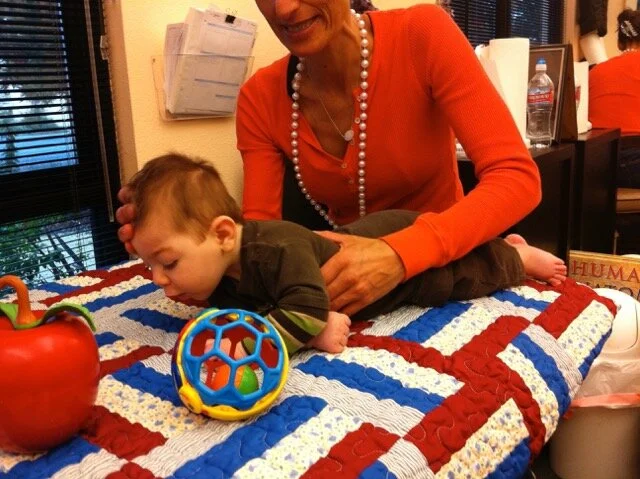Complementary Medicine and Your Child’s Health Journey
The Who Is Carter Foundation is on a mission to improve the health of children who have neurological conditions and chronic disorders by connecting them with complementary health treatments. We make this connection on thebrainpossible.com, where parents of children with special needs can find articles about a variety of complementary therapies, as well as search for practitioners who provide those therapies for children.
So what is complementary medicine? And why is it important to children’s health?
According to the National Center for Complementary and Alternative Medicine of the National Institutes of Health, complementary medicine (sometimes referred to as integrative or holistic medicine) is a group of health care practices and products that are “not presently considered to be part of conventional Western medicine. Complementary medicine is used in conjunction with conventional medicine.” Complementary therapy includes massage therapy, acupuncture, chiropractic treatment, and a number of other health approaches that complement standard medicine.
Carter Abbott works with a practitioner of the Anat Baniel Method
In 2012, the National Health Interview Survey found that 11.6% of children had used some sort of complementary health practice or health product in the past year. The most frequently used approaches were health products like fish oil, melatonin, and probiotics, and chiropractic care.
Why are parents seeking complementary approaches to treating their children’s health conditions? One study found that parents are choosing complementary treatment options “not so much as a result of being dissatisfied with conventional medicine, but largely because they found these health care alternatives to be more congruent with their own values, beliefs, and philosophical orientations toward health and life.” Parents in this study reported that they often chose complementary treatments because they were recommended by word of mouth, because of their reported effectiveness, to avoid the adverse effects of drugs, and because they desired a more personal approach to their child’s treatment. According to the National Institutes of Health, “complementary health approaches [for children] were most often used for back or neck pain, other musculoskeletal conditions, head or chest colds, anxiety or stress, attention-deficit hyperactivity disorder (ADHD) or attention-deficit disorder (ADD), and insomnia.” Children with chronic conditions (such as anxiety and headaches) are more likely than other children to use complementary therapies along with the traditional care of a pediatrician.
If you’re considering complementary treatments for your child, it’s important to do some research before selecting one:
Research potential practitioners carefully. Do they work with children and adolescents? Are they open to coordinating their care with your child’s other healthcare providers? Are they credentialed? For more information on credentialing, visit https://www.nccih.nih.gov/health/credentialing-licensing-and-education. A brief phone call or visit with a practitioner before scheduling an appointment can shed some light on whether the practitioner is a good fit for your child or not.
Be sure to tell all of your child’s healthcare providers--and even teachers and caregivers--about the complementary health treatments your child is using. This way, everyone caring for your child is informed and can coordinate a safe treatment plan for your child’s health, and everyone can be prepared to share important observations about your child’s progress.
Find out what treatments your insurance covers. Some complementary treatments are still not covered by insurance, so be prepared to pay out of pocket. However, it is becoming more commonplace for treatments like chiropractic, massage, biofeedback, homeopathy, or acupuncture to be covered by state Medicaid programs.
Know the risks. For example, read the ingredients of herbal remedies and dietary supplements carefully to avoid allergic reactions, and be aware that some supplements may have side effects or contain contaminants. But there are low-risk options: According to the National Center for Complementary and Integrative Health, “Treatments with the lowest risk--and those backed with the best evidence for treating symptoms in children--include biofeedback, guided imagery, hypnosis, mindfulness, and yoga.”
Educate yourself. This guide by Healthy Children and this one by the American Academy of Pediatrics are helpful in understanding complementary therapies and answer many of the questions parents have as they are seeking complementary treatment options for their children.
Where should parents start their child’s complementary health journey? The guides linked above are a great place to start. After that, we recommend looking through the catalog of treatments on The Brain Possible to see which ones may apply to your child’s health needs. Once you have identified some treatments, search The Brain Possible’s Practitioner Registry to find practitioners of those treatments. Note that many practitioners provide virtual (or telemedicine) appointments, so don’t hesitate to reach out to practitioners, even if they don’t work near you.
Do you have questions about complementary therapies or The Brain Possible? Which complementary therapies have you chosen for your child? How is your child responding? Reach out to us at info@thebrainpossible.com or info@whoiscarter.org. We’d love to learn about you and your child’s treatment journey and be a support along the way!
Would you like to support the work that Who Is Carter is doing for children and families? Consider making a one-time or monthly donation by clicking here.
Sources:
Kathi J. Kemper, Sunita Vohra, Richard Walls, ; the Task Force on Complementary and Alternative Medicine and ; the Provisional Section on Complementary, Holistic, and Integrative Medicine, “The Use of Complementary and Alternative Medicine in Pediatrics,” Pediatrics, December 2008. https://pediatrics.aappublications.org/content/122/6/1374
National Center for Complementary and Integrative Health, “Children and the Use of Complementary Health Approaches,” March 2017. https://www.nccih.nih.gov/health/children-and-the-use-of-complementary-health-approaches


